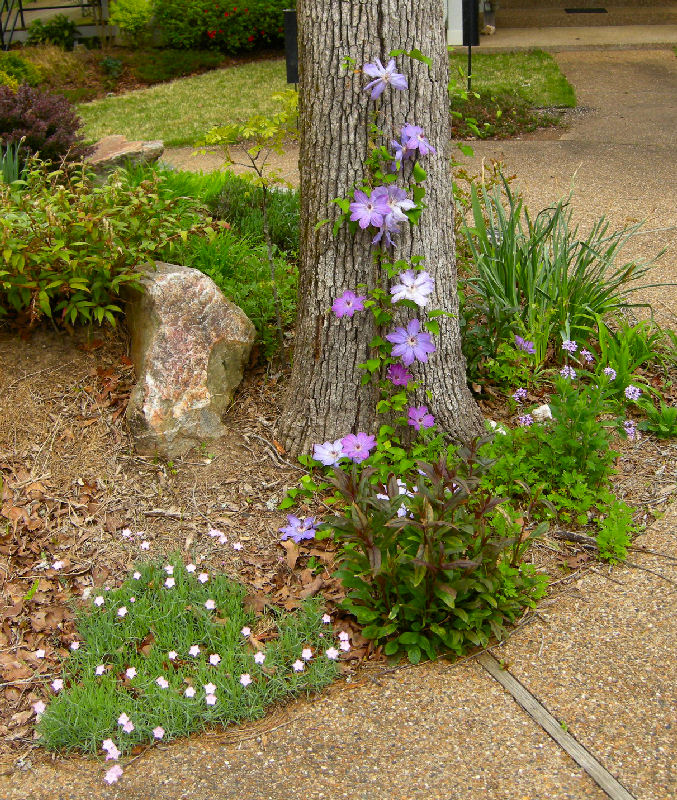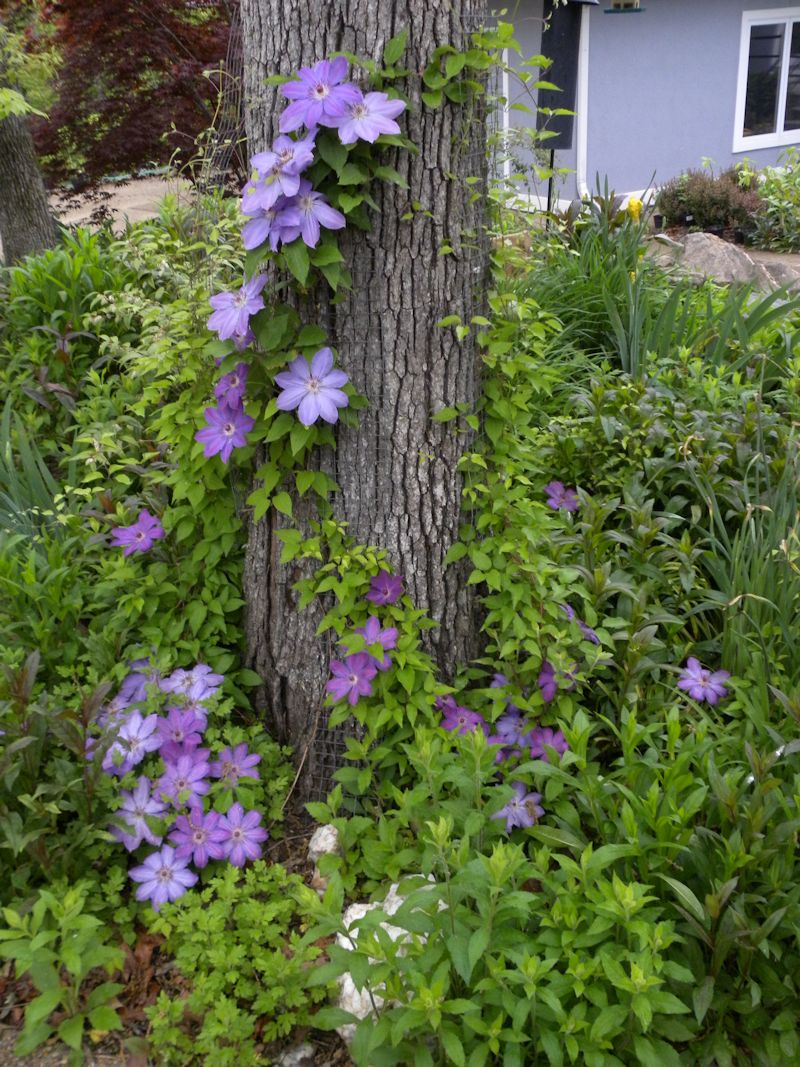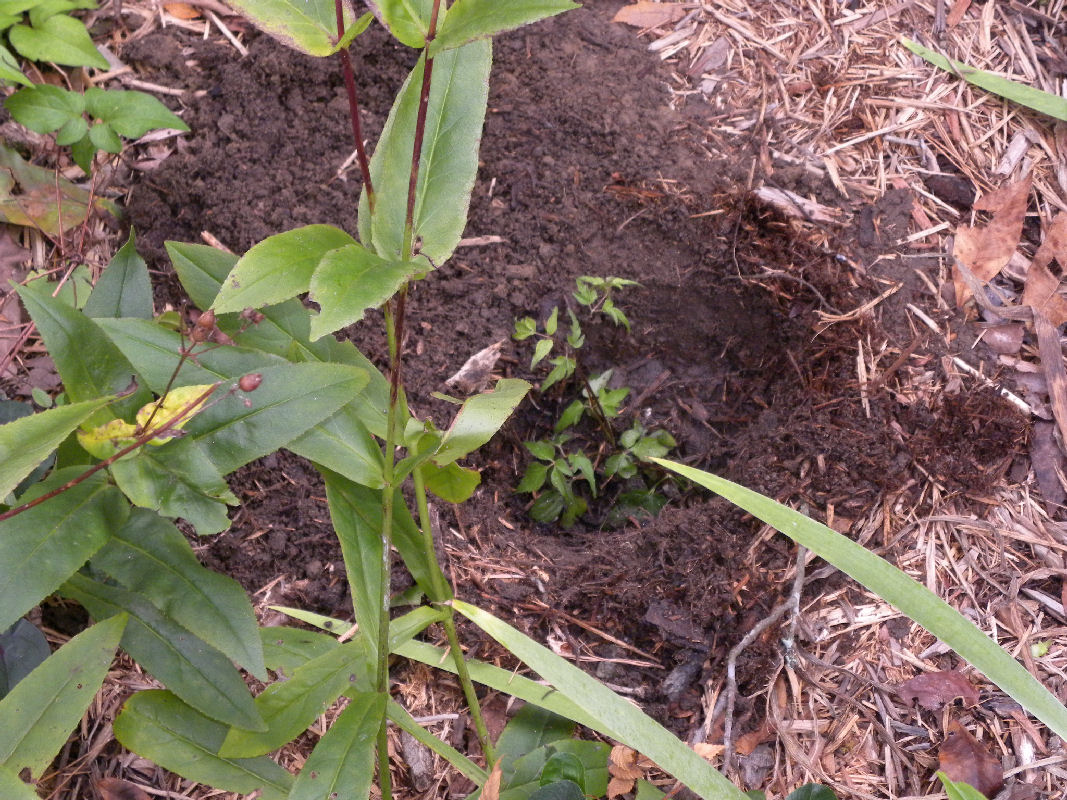Clematis
PlantingThe following is from www.catkin.org/gardens.1. When planting a clematis, it's important to bury the crown of the plant at least 2" below the surface of the ground to encourage more stems to grow from the base. [Other sources say as much as 6" below the surface.] The more stems the plant grows the faster the coverage and the less susceptible the plant becomes to disease. Remove any leaves that grow beneath the soil level. If the plant is very young (grown in a 2" pot or smaller), bury the plant deeply, but keep soil away from the stems until autumn. Then, build up the level of the soil with compost or good topsoil when the stems have seasoned. At the bottom and around the sides of the planting hole, add bonemeal which breaks down slowly, providing nutrients to clematis roots by the time they've grown into the planting hole. Finally, newly planted clematis need water, water, water. So, water deeply and frequently until the plant is established. 2. Clematis absolutely demand good drainage. If water stands on the surface of the planting hole, your soil needs to be amended to provide better drainage. Either add sand to the soil, or line the bottom of the hole with a layer of gravel. 3. Clematis roots need to keep cool. Either put it behind another plant which will shade its roots or shade it with flagstones. Hostas make good shade plants for it because hosta roots are shallow and won't compete for nutrients with the deeply buried roots of the clematis. 4. To encourage good flowering, sprinkle superphosphate [0-20-0] onto the surface of the soil at planting time. For mature plants, add superphosphate once in the spring and again in June. Your clematis will thank you with lots of colorful blossoms. 5. Finally, prune judiciously. If the stems of very young plants seem thin, pinch them back to just above a set of buds. This causes the stems to "thicken up", making them tougher and more resistant to damage. It also encourages the plant to produce more stems, and as we noted above, more stems means faster coverage and greater disease resistance.
|


